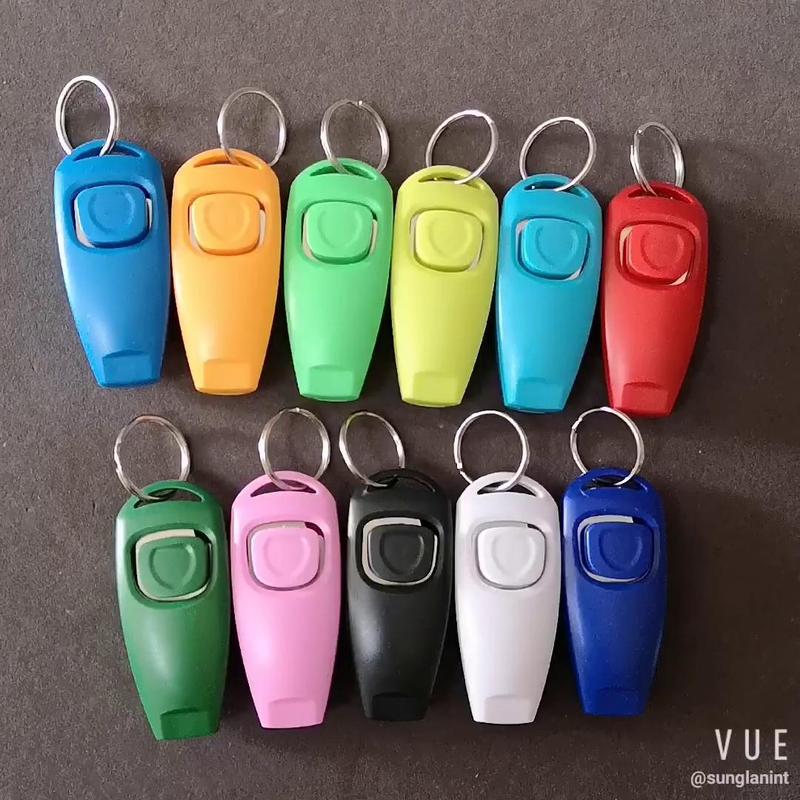2 in 1 plastic pet dog training clicker with whistle
2 in 1 plastic pet dog training clicker with whistle
- Detail
- Parameters
- Review
2 in 1 plastic pet dog training clicker with whistle
Packaging & Delivery
Packaging Details:
Packing:1000pcs/ctn
Meas:46x43x43cm
Nw/Gw:15.5/16.5Kgs
Delivery Detail:5-30 days
Product Description
Material:ABS
Size:7x3.1x1.6cm
Weight:15.5g
More Photos
1.How to Train Your Dog Using a Clicker?
Training your dog using a clicker is a positive reinforcement technique that involves using a sound (the click) to mark a desirable behavior, followed by a reward (usually a treat). Here’s a step-by-step guide to help you get started:
Get a Clicker and Treats
Clicker: Obtain a dog training clicker. These are inexpensive and widely available.
Treats: Use high-value rewards your dog loves, such as small pieces of chicken, cheese, or commercial dog treats.
Introduce the Clicker
Charge the Clicker: Before you start training behaviors, you need to associate the click sound with a reward.
Click the clicker and immediately give your dog a treat.
Repeat this several times (10-15 times) until your dog understands that the clicker means a treat is coming.
Choose a Behavior to Train
Start with simple commands like “sit,”“down,” or “come.”
Capture the Behavior
Wait for the Behavior: Observe your dog and wait for them to perform the desired behavior naturally.
Click and Reward: As soon as your dog performs the behavior, click the clicker and give them a treat. Timing is crucial—click at the exact moment they do the behavior.
Add a Cue
Once your dog reliably performs the behavior after a few repetitions, add a verbal cue or hand signal. For example, say “sit” just before your dog sits down.
Repeat this process until they respond to the cue without needing your assistance.
Practice Consistently
Practice in short, frequent sessions (5-10 minutes) to keep your dog engaged.
Use positive reinforcement and remain patient throughout the training process.
Gradually Reduce Treats
Once your dog consistently responds to the cue, start to reduce the frequency of treats. You can reward them intermittently to keep the behavior strong while also using praise or play as a reward.
Generalize the Behavior
Train in different locations and with different distractions to help your dog learn to generalize the behavior.
Add varying levels of difficulty, such as practicing in busy areas or around other dogs.
Be Patient and Positive
Remember that each dog learns at their own pace. Stay positive and patient, and avoid punishment, as it can lead to fear or anxiety.
Keep Training Fun
Always end on a positive note, with a success and a reward. Make training sessions fun and engaging for your dog to build a strong bond and promote learning.
2.How to choose a dog clicker?
Size and Ergonomics:
Choose a clicker that fits comfortably in your hand. Some clickers are designed with a larger button for easier pressing, which can be beneficial for prolonged use.
Sound:
Clickers come in various sound profiles. Some dogs may respond better to a softer click, while others might need a more pronounced sound. If possible, try different clickers to see which sound your dog responds to best.
Button Type:
Check if the button is easy to press. A clicker with a sensitive button will require less effort, which can be helpful during lengthy training sessions. Some clickers also have a rubberized button for grip.
Durability:
Look for a sturdy clicker that can withstand chewing or rough handling, especially if your dog is prone to holding onto things.
Attachment Options:
Many clickers come with a keychain loop or wrist strap, which makes them convenient to carry and ensures you won’t lose them easily.
Multi-functionality:
Some clickers come with additional features, such as a built-in whistle or a treat dispenser, which might be beneficial depending on your training needs.

